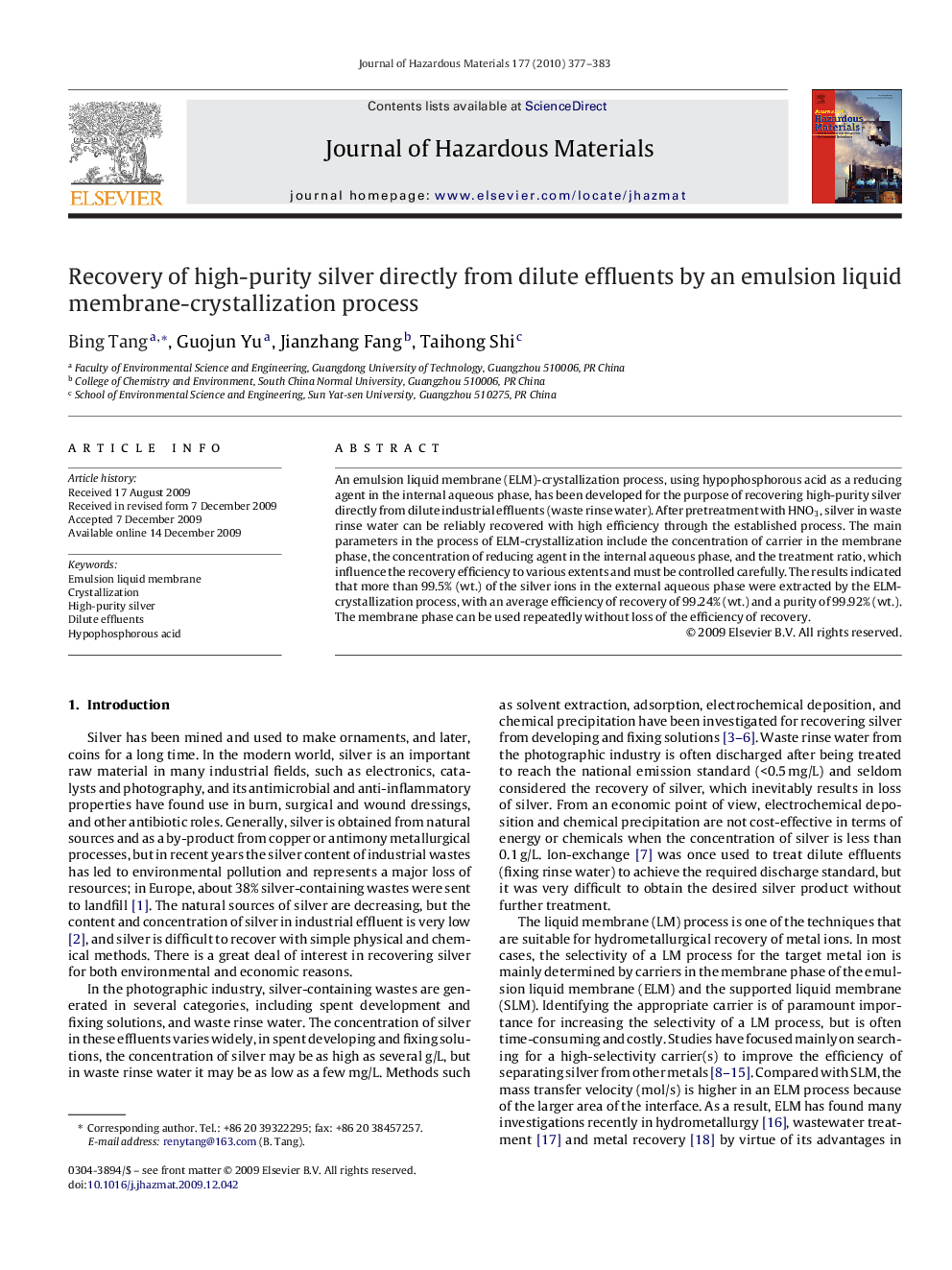| Article ID | Journal | Published Year | Pages | File Type |
|---|---|---|---|---|
| 580873 | Journal of Hazardous Materials | 2010 | 7 Pages |
Abstract
An emulsion liquid membrane (ELM)-crystallization process, using hypophosphorous acid as a reducing agent in the internal aqueous phase, has been developed for the purpose of recovering high-purity silver directly from dilute industrial effluents (waste rinse water). After pretreatment with HNO3, silver in waste rinse water can be reliably recovered with high efficiency through the established process. The main parameters in the process of ELM-crystallization include the concentration of carrier in the membrane phase, the concentration of reducing agent in the internal aqueous phase, and the treatment ratio, which influence the recovery efficiency to various extents and must be controlled carefully. The results indicated that more than 99.5% (wt.) of the silver ions in the external aqueous phase were extracted by the ELM-crystallization process, with an average efficiency of recovery of 99.24% (wt.) and a purity of 99.92% (wt.). The membrane phase can be used repeatedly without loss of the efficiency of recovery.
Related Topics
Physical Sciences and Engineering
Chemical Engineering
Chemical Health and Safety
Authors
Bing Tang, Guojun Yu, Jianzhang Fang, Taihong Shi,
